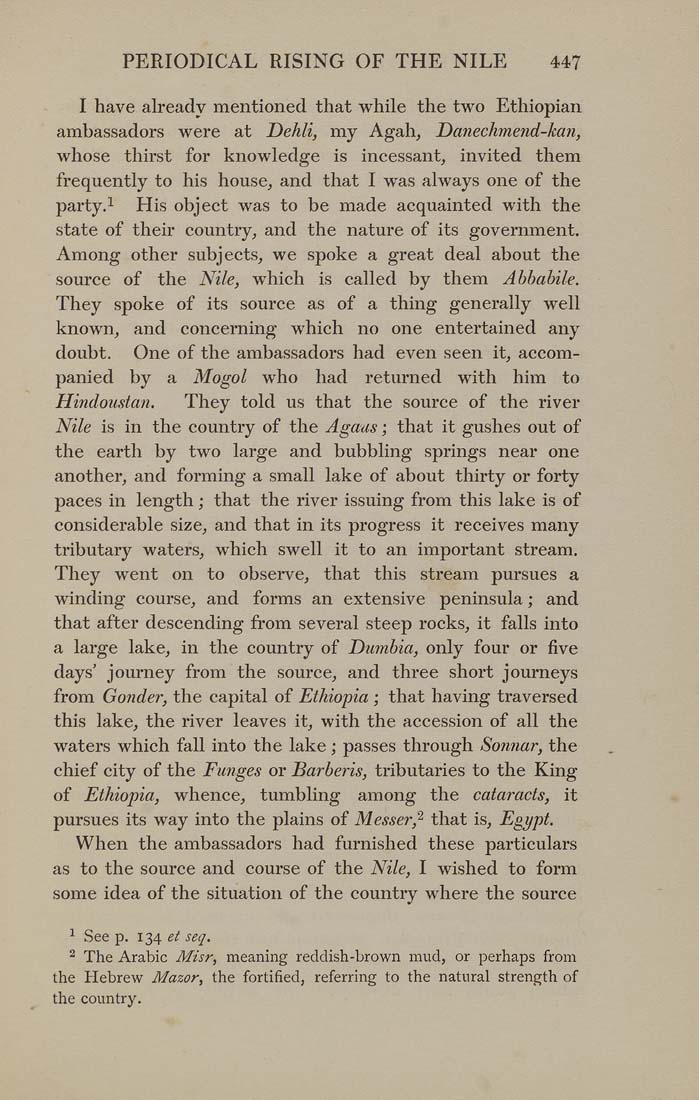PERIODICAL RISING OF THE NILE 447
I have already mentioned that while the two Ethiopian
ambassadors were at Dehli, my Agah, Danechmend-kan,
whose thirst for knowledge is incessant, invited them
frequently to his house, and that I was always one of the
party.! jjjg object was to be made acquainted with the
state of their countiy, and the nature of its government.
Among other subjects, we spoke a great deal about the
source of the Nile, which is called by them Abbabile.
They spoke of its source as of a thing generally well
known, and concerning which no one entertained any
doubt. One of the ambassadors had even seen it, accom¬
panied by a Mogol who had returned with him to
Hindoustan. They told us that the source of the river
Nile is in the country of the Agaus; that it gushes out of
the earth by two large and bubbling springs near one
another, and forming a small lake of about thirty or forty
paces in length; that the river issuing from this lake is of
considerable size, and that in its progress it receives many
tributary waters, which swell it to an important stream.
They went on to observe, that this stream pursues a
winding course, and forms an extensive peninsula; and
that after descending from several steep rocks, it falls into
a large lake, in the country of Dumbia, only four or five
days' journey from the source, and three short journeys
from Gonder, the capital of Ethiopia ; that having traversed
this lake, the river leaves it, with the accession of all the
waters which fall into the lake; passes through Sonnar, the
chief city of the Funges or Barberis, tributaries to the King
of Ethiopia, whence, tumbling among the cataracts, it
pursues its way into the plains of Messer} that is, Egypt.
When the ambassadors had furnished these particulars
as to the source and course of the Nile, I wished to form
some idea of the situation of the countiy where the source
! See p. 134 et seq.
^ The Arabic Misr, meaning reddish-brown mud, or perhaps from
the Hebrew Mazor, the fortified, referring to the natural strength of
the country.
|








